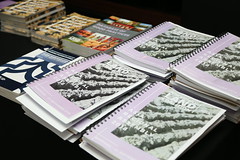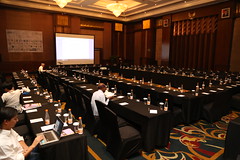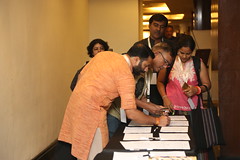SOURCE: THOMSON REUTERS FOUNDATION
By Megan Rowling
Key countries, including Indonesia, Peru and Liberia, are poised to make legal reforms or roll out policies that would give communities greater security on their land.
But political will is often lacking, RRI coordinator Andy White told the Thomson Reuters Foundation.
“I think we are on the brink of major change, both for saving forests and recognising rights, but it’s going to require a push for governments to take that next step,” said White.
“That push we hope will come from both the major investors – the private sector – as well as the citizens of their own countries,” he added.
The report said “a critical mass” of actors, including governments, aid donors and companies, now acknowledge that secure local land rights are “a prerequisite for addressing poverty, conflict, deforestation, and the climate crisis”.
The new global climate change agreement adopted in Paris in December advocates forest protection as an important way to reduce planet-warming emissions of carbon dioxide.
It also urges respect for indigenous rights, and the use of traditional knowledge as a guide for adapting to climate change.
A growing body of evidence shows communities are crucial to maintaining forests as stores of carbon, the RRI report said.
COSTLY CONFLICTS
New research by consultancy TMP Systems suggested that efforts to protect forests by turning them into reserves may be underestimating the impacts on local people.
Proposals to use international funding to set aside 12 to 15 percent of forests in the Democratic Republic of Congo as protected areas, and Norwegian aid to do the same for 30 percent of Liberia’s forests, could affect an estimated 1.3 million people through displacement or damage to their incomes, it said.
The costs of establishing those areas would be “significant”, running to hundreds of millions of dollars, suggesting the need for lower-cost approaches to keeping forests healthy and reducing emissions, the analysts said.
A separate TMP analysis of 362 disputes with communities over the use of land and resources in developing nations found that such tensions caused significant financial harm to investors in more than half the cases.
The study of conflicts in mining, energy, agriculture, transport infrastructure and forestry concluded that over 60 percent involved minorities and indigenous peoples, but in the forestry sector that number shot up to 90 percent.
White said companies, especially large multi-nationals, increasingly understand land conflicts can be expensive, leading to higher operating costs or even abandonment of some ventures.
“That is triggering government to take a more serious look at the urgency of straightening out land rights,” he said.
Free risk analysis tools have been developed to help businesses identify and address potential land issues.
TMP warned against assuming compensation can always provide a solution, because some communities will not put a price on their land and resources.
In its analysis, 93 percent of disputes were not over compensation paid to local populations, but other concerns – mainly displacement and environmental destruction.
“Investors and companies typically assume that disagreements can be resolved with money,” said TMP Systems founder Lou Munden. “But when you see that only one mining conflict out of 50 is driven by money, it makes you think differently about managing the risk.”
LIBERIA FEARS
According to the RRI report, governments in 33 low- and middle-income countries have recognised indigenous and community ownership of 388 million hectares (959 million acres) of forest land. They have “designated” an additional 109 million hectares for such communities, though that offers a more limited set of rights.
The total of almost 500 million hectares is over 30 percent of the total forest area in those countries – up from 21 percent in 2002, but below a 2015 target of 42 percent set by RRI.
If countries in the early stages of recognising community land rights at a national scale – including India and Colombia – follow through, it would add more than 100 million hectares of indigenous and community forest land, and directly benefit over 200 million people, the report said.
But in Liberia, there is concern over attempts to water down a groundbreaking Land Rights Act before it is passed.
According to Constance Teague of Liberia’s Sustainable Development Institute, 18 civil society groups recently claimed changes made to the act’s core principles “would erode rural communities’ land rights, exacerbate poverty, and potentially set up the country for further unrest”.
White said he hoped governments in Liberia and elsewhere would respond to pressure from indigenous peoples, conservation groups and businesses that are “joining forces and seeing the urgency, as well as the logic, of securing land rights”.
(Reporting by Megan Rowling; editing by Laurie Goering. Please credit the Thomson Reuters Foundation, the charitable arm of Thomson Reuters, that covers humanitarian news, women’s rights, trafficking, corruption and climate change. Visit http://news.trust.org)






